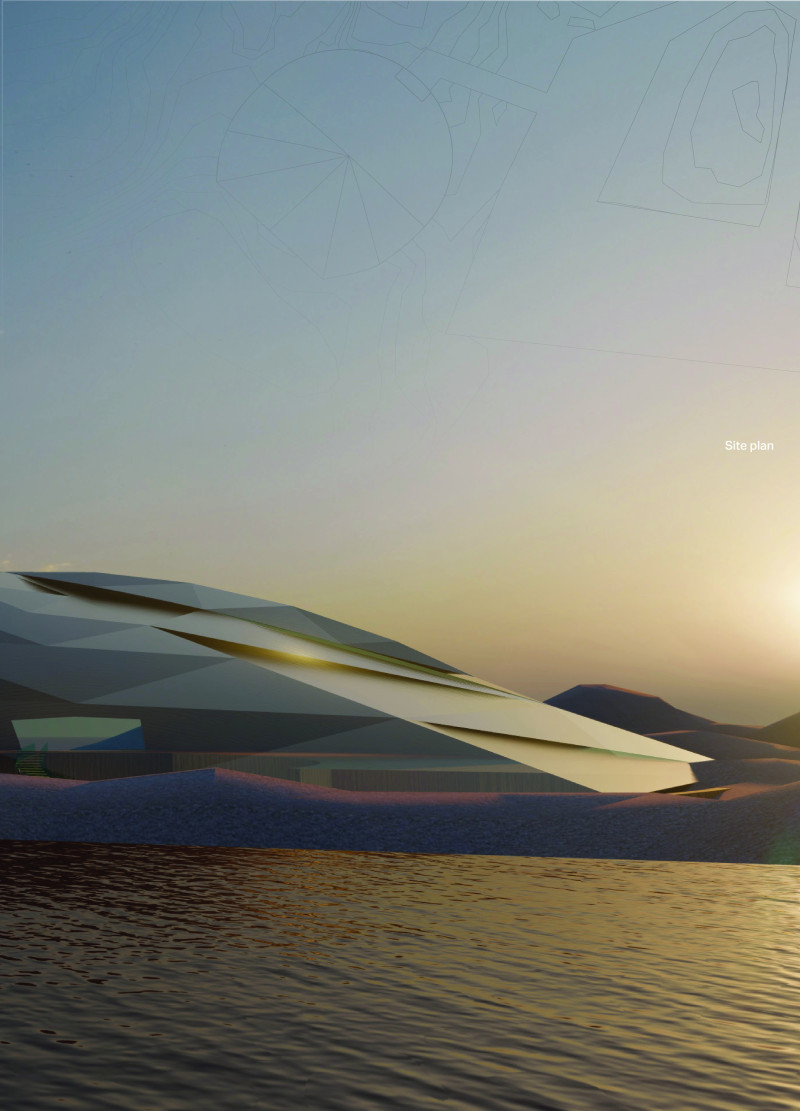5 key facts about this project
Þrisvar is located in Iceland, a land known for its dramatic glacial landscapes. The design seeks to create a strong connection between nature and human experience, focusing on sustainability and enhancing how people enjoy food. The concept embraces the unique characteristics of the area, drawing inspiration from the surrounding glaciers and their influence on the ecosystem.
LAYOUT AND FUNCTION
The layout is carefully divided into different levels to serve specific functions. The ground floor features a multipurpose hall alongside a viewing platform, allowing visitors to take in the beautiful scenery. The arrangement promotes both leisure and observation, creating a fluid transition between indoor and outdoor areas. Upon entrance, expansive views, including those of the local Mývatn nature baths, greet guests, enriching their arrival experience.
DINING EXPERIENCE
On the lower ground level, attention shifts to the dining experience. This area includes a spacious dining area, a fully equipped kitchen, and an integrated greenhouse garden. The greenhouse provides fresh produce directly to chefs, allowing guests to witness where their food comes from. This farm-to-table approach emphasizes local sourcing, making the meal not just about taste but also about the connection to the landscape.
SPIRAL STAIRCASE
A notable feature of the design is the spiral staircase connecting different levels. More than just a way to move between floors, the staircase acts as a transition from the outside world to a cozy dining space. This design invites guests to engage with the surrounding nature as they descend, enhancing their overall experience.
MATERIALITY AND ENVIRONMENTAL STRATEGIES
Although specific materials are not mentioned, the design relies on natural thermal properties and sustainability. The approach suggests a focus on using materials that will fit well with the local environment. Considering climate conditions plays a vital role in the greenhouse's success, helping to provide the necessary resources for culinary offerings.
The connection between the kitchen and dining areas becomes clear through the visual presence of the greenhouse, where fresh produce grows under natural light, blending the concepts of nature and food seamlessly together.






















































